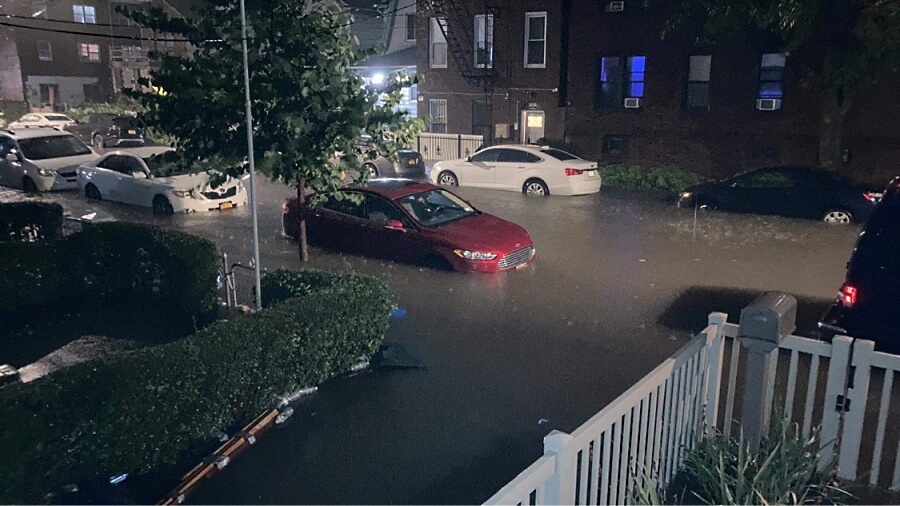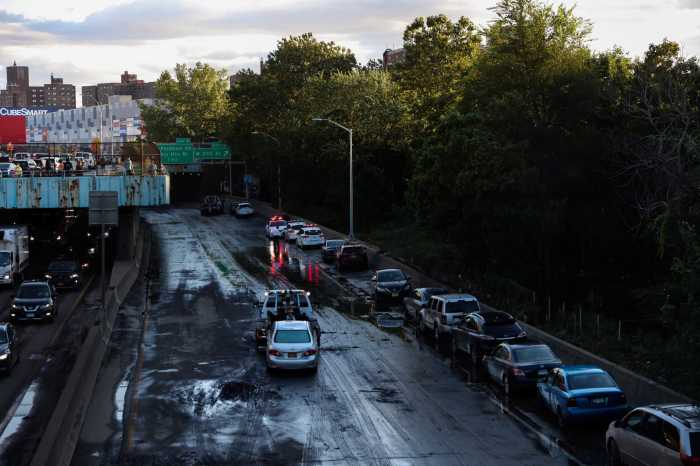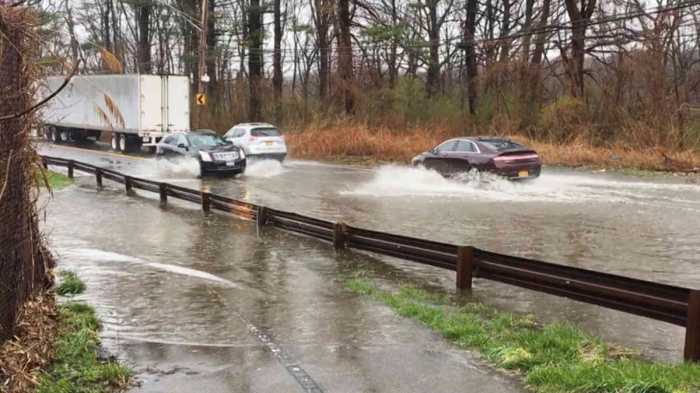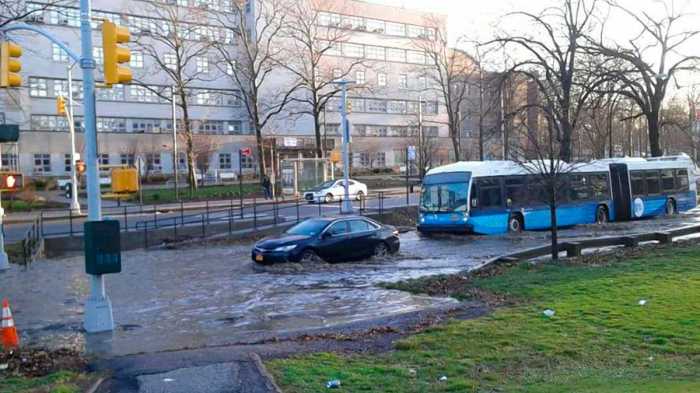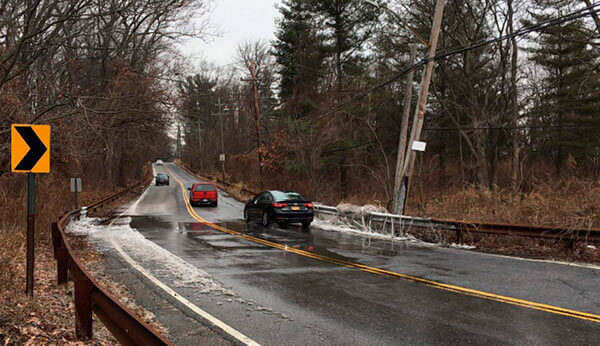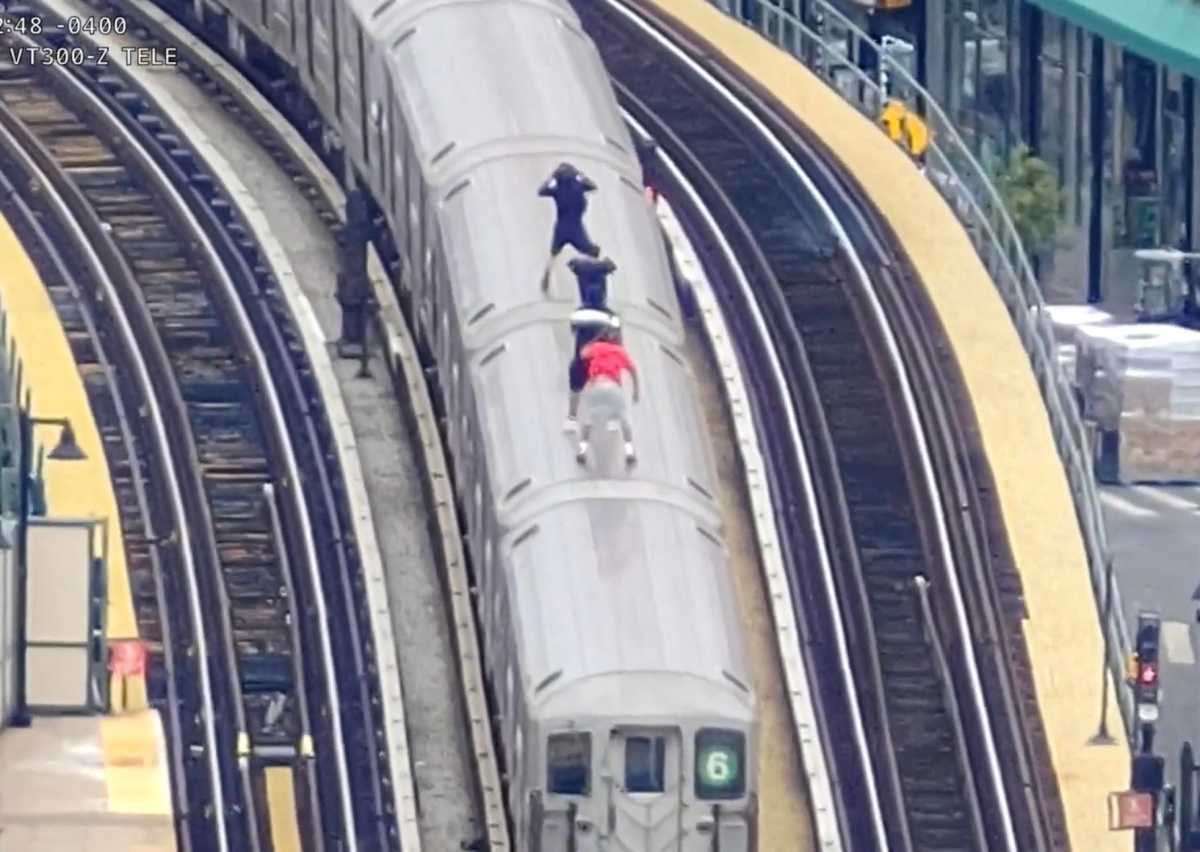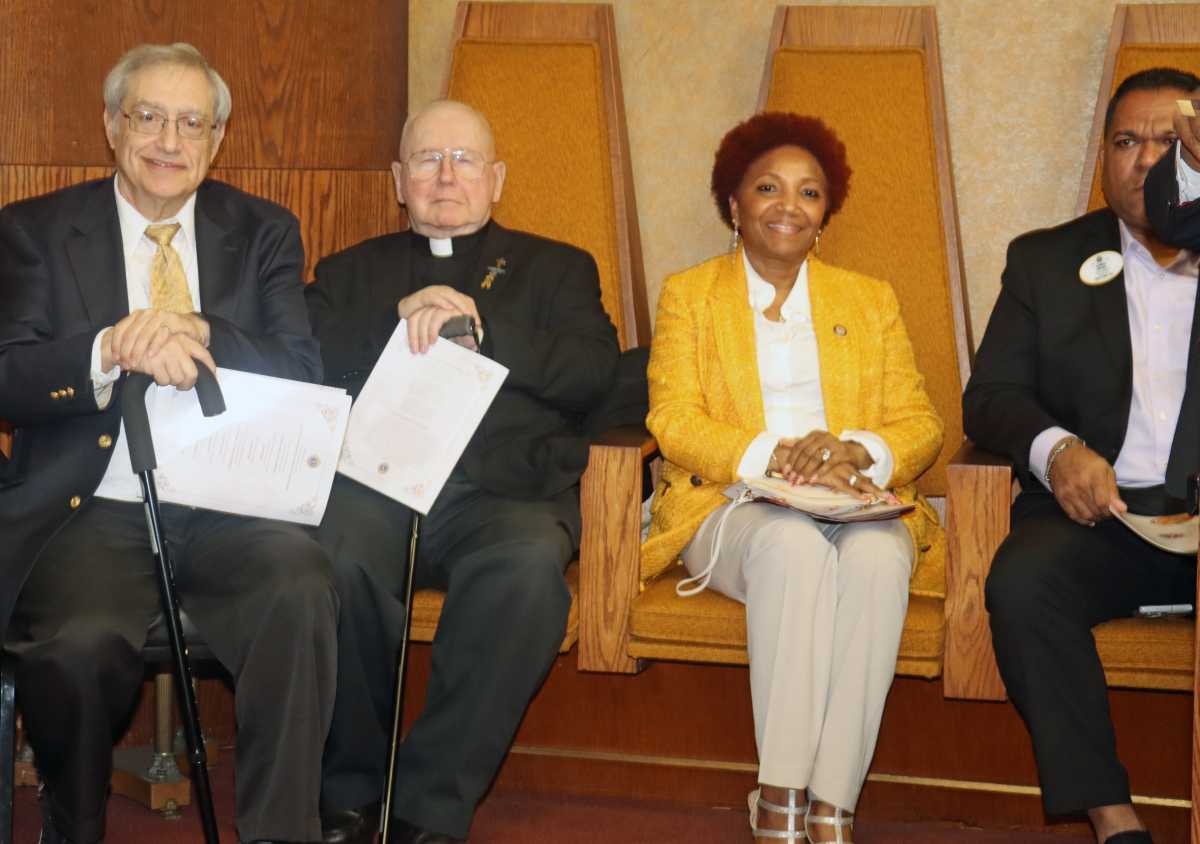After a tumultuous 2021 Atlantic hurricane season, this season — which began on June 1 and runs through November — the National Oceanic and Atmospheric Administration predicts the arrival of 14 to 21 named storms, including three to six major hurricanes. With fast and explosive rain storms looming, Bronx homeowners in flood-prone communities are anxious about the threat of flooded homes and overwhelmed sewer systems with no respite from intensifying climate change.
“I don’t sleep at night. Every time I see it’s going to rain, I feel like a nut because I feel traumatized by the amount of flooding and damage these rainfalls have done,” said Yonkers resident Dawn Ciciola, whose family’s home for 50 years sits in the middle of 4300 block of Grace Avenue in Wakefield was overwhelmed with downpours from Hurricane Ida in 2021 and a most recent rainfall on June 2.
Bronx infrastructure has taken a beating from the intense rainfall that is flooding the borough’s roadways and domiciles. In the Wakefield neighborhood, a landlocked community in the northern portion of the Bronx, residents said that heavy rainfall often floods Bruner Avenue where a stretch of multifamily residential homes is met with invasive stormwater and runoff from sewer drainage in their basements.
“When I got home (during Hurricane Ida) I was knee-deep in water to even get into our house, and our (appliances) were all destroyed,” said resident Mary O’ Shaughnessy, who moved to Wakefield two years ago and has already encountered two flooding events from hurricanes Ida and Elsa. “And the water was literally fountaining up, and our gutter was overloaded. It was around 21 inches of water in the basement.”
In City Island, one of the more flood prone communities in the borough due to its proximity to the Long Island Sound, John Hampton told the Bronx Times he lives in “fear and regret” at his Eastchester Bay home, as minor rainfalls — much less intense rainstorms — threaten to overwhelm his residence. And in some cases, it’s life and death, such as the fate of 33-year-old Alan Dorsainvil who was found dead inside a flooded car in Mount Vernon during Ida.
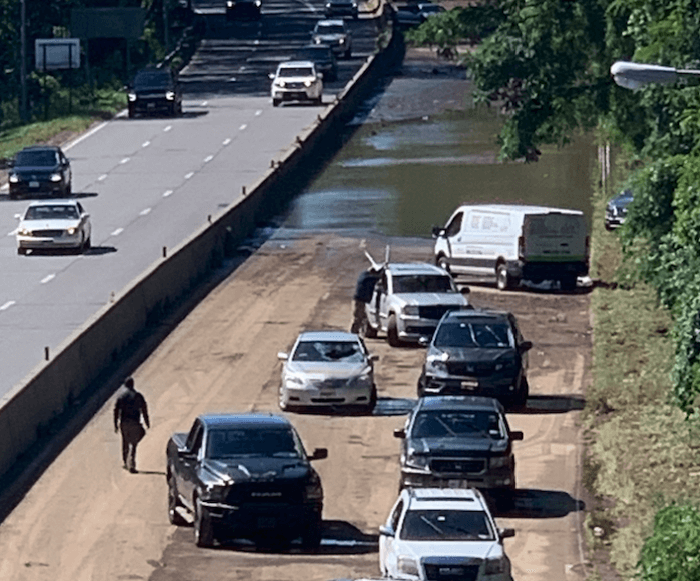
These stories from residents are becoming more commonplace as climate change barrages a flood-prone borough, particularly in the northern and western sections. According to riskfactor.com, which assesses multi-year flood risks across the nation, 9,690 properties in the Bronx are likely to be severely affected by flooding over the next 30 years.
Sea levels along New York’s coastlines have already risen more than a foot since 1900 and will be 18-75 inches higher than today by the year 2100. Last fall Hurricane Ida offered a dystopian view into a climate-ravaged Bronx as the Major Deegan Expressway was pooling with stormwater leaving aisles of abandoned cars laid in its wake.
A few things imperil the Bronx when it comes to recent rain events, and the city’s sewer management has long been a concern for residents in flood-prone areas.
According to O’Shaughnessy, a city Department of Environmental Protection (DEP) supervisor who inspected the Bruner Avenue sewer line last week said it had not been cleaned in years, and that there was so much buildup of grease and debris that the 12-inch line was effectively reduced to 8 inches, thus limiting its effectiveness against torrential rains. A DEP spokesperson also confirmed O’Shaughnessy’s claims to the Bronx Times.
But even so, DEP is still limited in what it can do to stop the consequences of rapid and intensifying weather changes. About 60% of the city is a combined sewer system, which allows stormwater from the streets to be combined with raw sewage; whenever a rainstorm overwhelms the sewers, a gross confluence of grime and sewer runoff flows into basements throughout the five boroughs.
When Ida’s clouds swept over New York City last September, they produced a total of 7 inches of rain in 24 hours. The torrent overloaded the city’s drainage system, city officials initially said.
“Rainfall rates were really extraordinary and far exceeded the capacity of the system,” said DEP Commissioner Vincent Sapienza, at a Sept. 2 press conference the day after Ida. “Anything over two inches an hour, we’re going to have trouble with.”
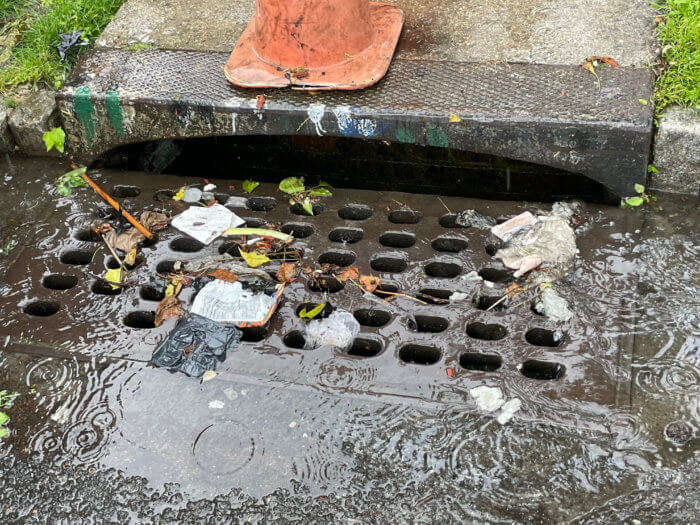
While a majority of the Bronx is landlocked, residents are surrounded by rivers on three sides — the Hudson River to the west, the Harlem River and Bronx Kill to the south and the East River to the east. While FEMA’s flood maps have scant flood zones in the Bronx, Ida and rainstorms in its ilk did not discriminate when it came to flooding the borough.
Flood maps highlight high-impact coastal flooding and storm surge that could come from major storms, but they don’t account for localized flash flooding which happened during Ida, climatologists told the Bronx Times. They also don’t account for the extensive overload on city sewers, which has lead to increased flooding in landlocked Bronx neighborhoods.
A DEP spokesperson told the Bronx Times that hundreds of millions of dollars every year are allocated to upgrade and build out the city’s sewer system, but the frequent high-torrential downpours overload the city’s drainage system.
“Last fall the remnants of Hurricane Ida dropped record amounts of rain on NYC — more than three inches in a single hour in some parts of the five boroughs. This amount of precipitation in such a compressed time period simply overwhelmed the capacity of the sewer system in many areas,” said DEP spokesperson Edward Timbers. “And, in fact, in many areas the sewers cannot be built larger than they already are — in some places the sewers already occupy all the area under the roadway.”
There are currently about 7,500 miles of sewers and 150,000 catch basins that drain stormwater from NYC streets into the sewers. And on any given day there are dozens of upgrade projects ongoing across the five boroughs.
When it comes to capital projects, that process is managed by partner agency the city Department of Design and Construction, and it can be initiated in a few ways: DEP staff monitor reports of flooding or sewers that need repairs, or sewers that have reached the end of their useful life and need to be replaced, and elected officials and community boards may bring attention to an area they believe is in need of upgrades.
The city’s shift to green infrastructure — such as rain gardens, infiltration basins and green roofs — intercept stormwater before it can reach a catch basin and allows it to be naturally absorbed into the ground. Green infrastructure has bought several Bronx communities near Westchester Creek and the Bronx River some time and the DEP says the use of green infrastructure creates additional capacity in the sewer system and helps reduce flooding.
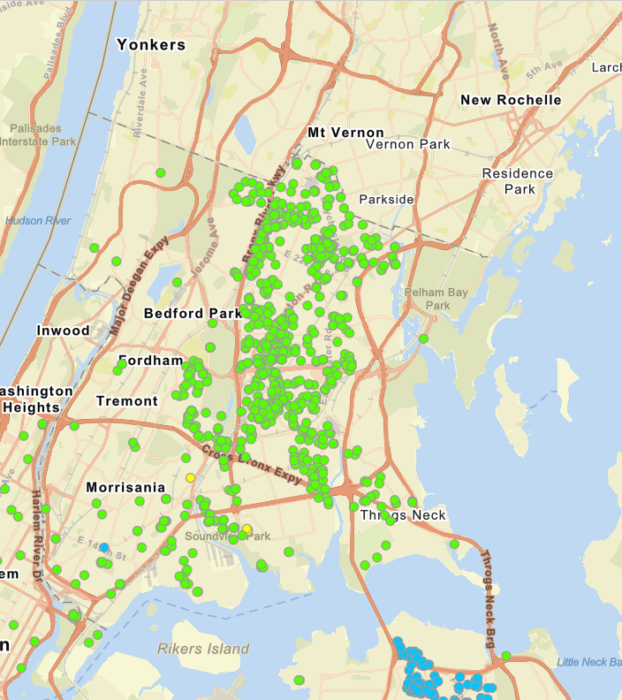
However, lack of green infrastructure near areas like Van Cortlandt Park and Tibbets Brook leave residents susceptible and frustrated with the lack of an environmental response from city leaders.
Groups like the Bronx Council for Environmental Quality (BCEQ) have implored local leaders to accelerate projects to daylight the Tibbetts Brook, an effort that would redirect overflow water from Van Cortlandt Lake and mitigate the major flooding that Ida caused to Bronx parkways and roadways like the Major Deegan.
“Decades of overbuilding and disinvestment in the Bronx have made the Major Deegan Expressway an international symbol of urban failure to meet the planning changes demanded by climate change,” BCEQ president Dr. Robert Fanuzzi previously told the Bronx Times. “These changes should not be conditioned on the next weather forecast but should have happened yesterday.”
Reach Robbie Sequeira at rsequeira@schnepsmedia.com or (718) 260-4599. For more coverage, follow us on Twitter, Facebook and Instagram @bronxtimes

